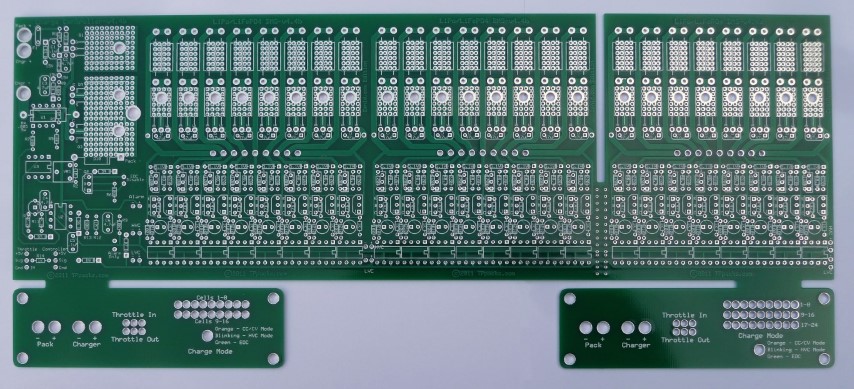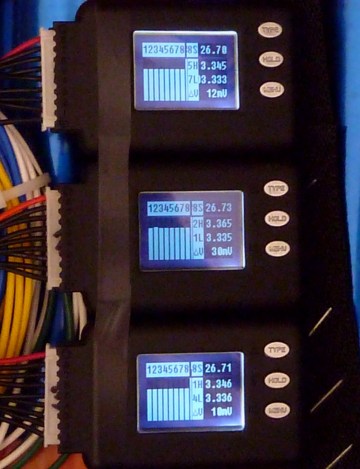fechter said:
midwest mayhem said:
I've done this without any cells connected and the master LED faintly lights up (red, I believe) around 8v, but goes up to 20v without drawing any current registered on the power supply. The board passes all the other tests. Is this bad or can I ignore it as long as everything else functions correctly?
Take it up to 20v and measure the voltage on the main FET gate (probe the two outside legs carefully).
Never did this test but finally got everything together and I think it works! Charging a 15Ah LiFePO4 Headway pack with two 54v Meanwell's (max voltage without load is 119 volts).
Only concern is the LED for the first cell seems to be on when the others are off and flashing opposite of the others in the final "pulse" (I think that's the final one) charging stage.
It took a while to balance the first time around and I wasn't sure if it was going to work (one cell didn't seem to charge) but eventually all the shunt LEDs came on. I was confused that it stayed orange (CC/CV mode) for so long without seeming to do anything then turn red and have shunts come on, then go back orange for a long while.
Then the all the shunts came on bright and stayed on pretty much continuous with a brief flash of indicator LED every 2 seconds. Shunts got pretty hot, so I turned down charger voltage. Had to unplug charger a few times while adjusting because the indicator started flashing all 3 colors so I guessed I had to reset it. Then played with EOC adjustment, lights flashed a lot, then indicator turned green!
Below are two videos, one of the beginning of charge and other at the end. In both you can see the issue with the first cell's LED. The only thing different about this cell is I don't have a tap wire, I jumped it to the pack negative like Zenid did. Could this be the issue?
tl;dr I think it works but the first cell LED is wonky.
Thanks to everyone who's been involved in this project! I had no previous experience with this sort of thing (college mechanical engineering student), but was confident with the resources available to me I could figure it out.




